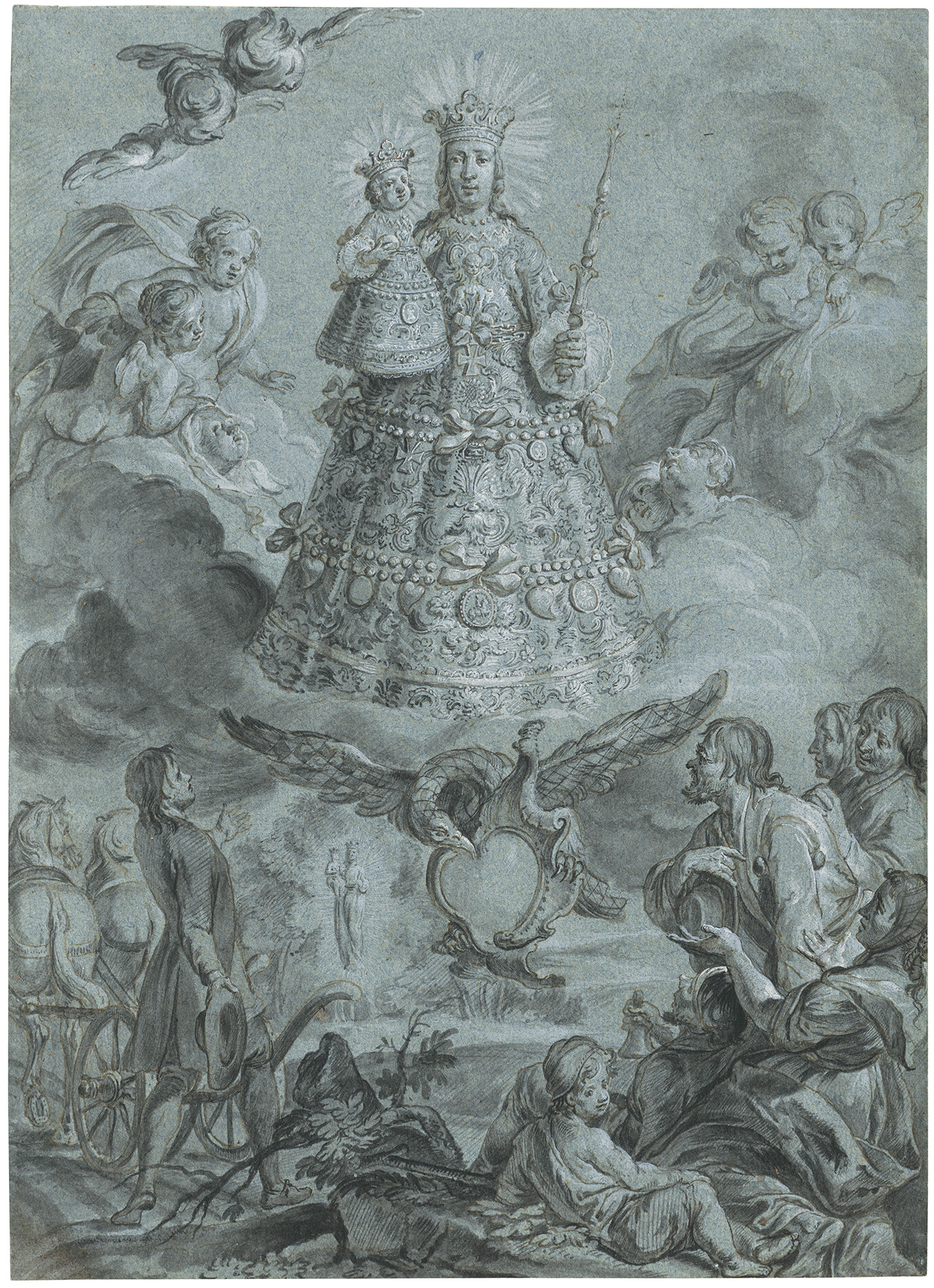Loading the page ...
Johann Wolfgang Baumgartner
(1709 Kufstein – 1761 Augsburg)
The Virgin of Mercy Surrounded by Angels Appears to Peasants in the Field. Pen and point of brush in greyblack and brown ink, grey wash and white heightening, on blue paper. 27.8 x 20.2 cm. Circa 1750–60. Watermark: Figure 4 over heart and the instruments of the Passion.
This varied, masterfully executed preliminary drawing by Johann Wolfgang Baumgartner dates to the artist’s late period. The accurate design of the composition and the subtle distribution of light show him at the pinnacle of his art. After 1733 Baumgartner worked in Augsburg, where he initially distinguished himself as a reverse glass painter. He subsequently also made his mark as a painter and, from the 1750s onwards, increasingly as a fresco painter. Baumgartner drew stylistic inspiration from Johann Baptist Bergmüller and Georg Philipp Rugendas as well as from other masters associated with the Augsburg Academy. From the 1740s the form of rocaille ornamentation practised in southern Germany became a dominant stylistic element in Baumgartner’s formal idiom. The artist left an extensive corpus of drawings and produced many designs for thesis prints and devotional pictures as well as suites of allegories and myths, which engravers from the Augsburg School transferred to the printmaking medium.
The present drawing was probably intended as a design for an engraved frontispiece. Baumgartner may well have modelled his portrayal of the Mother of God on the kind of miraculous image of the Virgin Mary of Heuwinkl that is to be found in the pilgrimage church of the same name in Iffeldorf in the Bavarian Oberland; this shows Mary as the Queen of Heaven with crown and sceptre. The artist has ingeniously blended the stiff, almost puppet-like votive statue of the Madonna, wrapped in a heavy, highly ornate brocade robe, into the turbulent terrestrial sphere below. Simple country folk gaze up in reverence at the Virgin of Mercy and pay her their respects, while in the background the Mother of God appears in person to the people, thus introducing an added dimension of reality into the composition. A heraldic eagle with splayed wings and rocaille ornamentation gives the scene a decorative flair fully in keeping with the southern German Rococo style.
Provenance: collection of A. Ritter von Franck, Vienna and Graz (Lugt 946); collection of Charles Thormann, Bern (Lugt 479 b), verso with two other handwritten collectors’ notes.
Contact us for further information